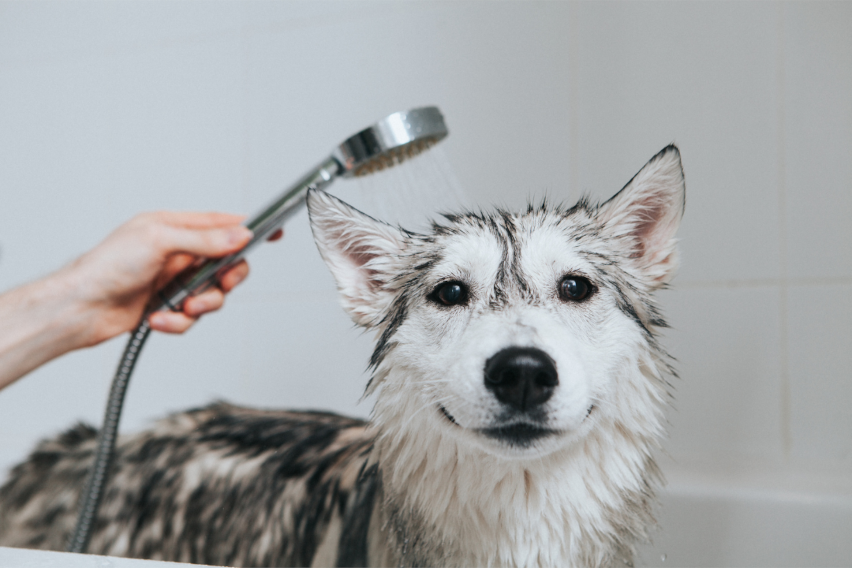Dos and Don’ts for Washing your Dog
Bathtime is a chore for dog owners, even when pups are cooperative and relatively calm during the process.
So you may be wondering if you should be giving more baths than you do, or how to do it effectively so you don’t need to do it as often. Here are a few tips on how (and how often) to approach this task.
DO: Wash your dog at least once a month to ensure they aren’t overtaken by dirt, odors and matting. That can be sufficient for animals with shorter, straighter coats (think labs, pit bulls and chihuahuas) while those with soft or wiry fur like poodles, yorkies and schnauzer require more attention and may need a bath every week or two. Other factors to consider include how much your dog enjoys dirt-digging and mud puddles likes and any allergies to grass or other environmental triggers.
DON’T: Bathe your dog more than once a week unless advised to by a veterinarian. Shampoos and soaps strip can strip dogs’ skin and hair of natural oils, leaving dry skin and damaged fur behind.
DO: Use shampoo or soap formulated for dogs, not people. Even baby shampoo is more likely to dehydrate and irritate your pooch’s skin because our skin is naturally more acidic than theirs. Pantene or Head & Shoulders can be OK every once in a while if you have nothing more appropriate, but don’t let it become a habit.
DON’T: Use dog shampoo past its expiration date – ingredients degrade over time, rendering them less effective or potentially becoming an irritant.
DO: Use lukewarm water for your pet’s bath, roughly 80 to 90 degrees.
DON’T: Stick zealously to this rule if your pet seems to prefer something a little cooler or warmer.
DO: Stay as chipper and reassuring as possible if your dog doesn’t love bathtime, and use distractions like a “lick pad” full of peanut butter or favorite toys to keep them as happy as possible. Keep treats handy to reward good behavior, too!
DON’T: Let your own negative feelings about these baths affect how you treat your pet or get angry when your dog is less than obedient – this will just create more frustration.
DO: Pat your dog dry with a thick bath towel or towels to soak up as much moisture as you can. Then let the fur air-dry, but don’t let your dog outside until they’re completely dry to minimize their ability to undo all the work you’ve just done.
DON’T: Use a hair dryer if they’re at all startled or scared by all of the noise. And if you do, keep the nozzle at least two inches away from their fur and keep it moving rather than let it point at a particular spot, which can lead to irritation or even burns.
DO: Examine your dog for any unusual bumps, scratches or other forms of skin irritation which might be easier to spot through wet, slicked-down hair than their normal fluff.
DON”T: Avoid taking your dog to a professional groomer when you can afford to. It saves you time and groomers are trained to look for telltale signs of skin irritation or possible health issues.

